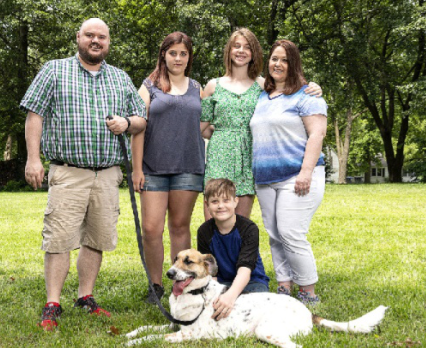The skewer had missed his facial nerve, which controls facial expression and the sense of taste.
尖桿沒有刺到他的面部神經,該神經控制著人的面部表情和味覺。
Most important, it had missed both the crucial arteries: the carotid and vertebral.
更重要的是,它沒有刺到兩個重要的動脈:頸動脈和椎動脈。
In fact, it appeared to have actually nudged them out of the way without puncturing them.
實際上,尖桿似乎是把動脈擠開了,而沒有刺到它們。
I don't know how a kid can be so lucky, thought Dr. Ebersole. "Jeremy," he said, "put your hands on that thing, get a feel for how easily it'll move."
埃伯索爾醫生說,我不知道這個孩子怎么會這么幸運。他說,“杰里米,把你的手放在那個桿子上,感受一下它容不容易松動。”
He was speaking to chief resident Jeremy Peterson, MD, a burly 32-year-old who stood near the boy's head.
站在他邊上和他說話的是總住院醫師杰里米·皮特森,現年32歲的率直的醫學博士。
It would be up to him to remove the skewer. Truth be told, Dr. Peterson was nervous,
他將是把尖桿去掉的那個人。說實話,皮特森醫生很緊張。
but he placed a steady left hand at the base of the skewer to anchor it; his right hand grasped just above his left.
但是他穩穩地將左手放在尖桿底端將其固定,右手則在左手稍上方握住尖桿。
He nudged it back and forth ever so slightly while Dr. Ebersole watched on the monitor in case the movement harmed a vessel.
他非常輕微地前后推著它,而埃伯索爾醫生則盯著監測器,以防尖桿損傷血管。
It barely moved. "It feels pretty solid," Dr.Peterson said. "OK, let's go," said Dr. Ebersole.
皮特森醫生說,“它幾乎沒有動,刺的很結實。好吧,我們走。”
He'd be the eyes, watching the monitor constantly, while Dr. Peterson would have the feel of the thing as he worked on getting it out.
他充當著眼睛,經常看著監測器,而皮特森醫生則要找到感覺,把尖桿去掉。他必須得很慢,有力,而且得平滑地把它拔出來。
He'd have to do it slowly, strongly, yet smoothly, mostly from his right arm, while being careful that his left "base" hand didn't exert too much pressure—because it was literally on Xavier's eye.
這個過程主要是使用右手的力量,同時得小心,底端的左手不能施加太大的力-因為左手就在澤維爾的眼睛上。
The skewer was surprisingly hard to budge. It took all the strength in Dr. Peterson's right arm to move it an inch—then it stopped.
令人意外的是,拔動尖桿非常難。皮特森醫生用盡了右臂所有的力量才拔動了一點-然后就卡住了。
"It feels stuck on something." "OK, hands off," ordered Dr. Ebersole.
“感覺是卡在什么東西上了”。“把手放開”,埃伯索爾要求道。
Dr. Peterson carefully let go of the skewer and took a half step back, while Dr.Ebersole enhanced the view. The clearer picture showed that it was hung up on a neck ligament, not a danger.
皮特森醫生謹慎地放開尖桿,并往后退了半步,埃伯索爾加強了檢測視圖。更清晰的圖片顯示它掛在頸部韌帶上,沒有危險。

But the skewer was now so close to the vertebral artery that it was bending it.
但是尖桿離椎動脈太近了,使它產生了彎曲。
"Jeremy, angle it a little toward you." This would move it away from that artery. Dr. Peterson did as asked. "OK, go again." It worked.
“杰里米,把角度朝你那調整一點。”這會使它離開椎動脈。皮特森醫生照做了。“好的,來吧。”奏效了。
Dr. Ebersole watched the tip of the skewer safely pass the vertebral artery. "It's sliding pretty easy now," said Dr. Peterson.
埃伯索爾看著桿子的尖端安全地通過了椎動脈處。皮特森醫生說,“現在移動它非常輕松”。
Yet he continued to pull it very slowly, especially as it passed the jugular—would it pull open the seal that had formed? No; the jugular had healed itself.
但是他還要繼續慢慢地拔,尤其是尖桿經過頸靜脈的時候-它會將已形成的創面扯開嗎?不會,頸靜脈已經自己痊愈了。
Then, finally, the last hurdle: the carotid artery. The metal passed it smoothly, too—and suddenly, the skewer was out.
然后,最后一個障礙:頸動脈。尖桿也很平滑地經過了它-突然,尖桿就出來了。
It was 3 p.m. when Dr. Ebersole came into the waiting room and told Xavier's parents, "It's out.
下午3點,埃伯索爾醫生走進候診室,對澤維爾的父母說:“拔出來了。
He's OK." There was a cheer from the crowd of family and friends. "Can I hug you?" asked Gabrielle, and she did.
“他沒事。”親朋好友馬上就歡呼起來。加布里埃爾問,“我能擁抱你嗎?”她就擁抱了醫生。
The only physical evidence of Xavier's unplanned adventure is a tiny bump beside his nose and some numbness on the left side of his face.
這次意外的冒險在澤維爾臉上留下的唯一痕跡就是鼻子邊上的一個小腫塊,還有使他的左半邊臉有些麻木。
And yet, things are different nowadays. Xavier often grabs the leash to take Max for walks—he's no longer scared to walk the dog alone.
然而,現在情況不同了。澤維爾經常抓住皮帶帶麥克斯散步,他不再害怕獨自遛狗了。
And when he gets a scrape or has a mishap, instead of going straight to ten on the pain scale the way he used to,
當澤維爾被刮傷或是倒霉的時候,他不再會像以前那樣直奔疼痛評分表上的10分,
he'll look at his mom calmly and say, "This hurts pretty bad." "Is it skewer bad?" Gabrielle will ask, and Xavier will laugh.
他會看著他的母親,平靜地說,“這個很疼。”“像尖桿刺到那樣糟糕嗎?”加布里埃爾會這樣問道,然后澤維爾就笑了起來。


